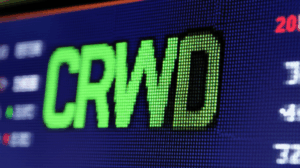Checks and Balances Are Holding—And That’s Bullish for Markets
In the dynamic world of finance, headlines often fixate on immediate market movements, quarterly earnings, or the latest interest rate adjustments. Yet, beneath these surface-level fluctuations, a more foundational element profoundly influences investor confidence and long-term market stability: the resilience of a nation’s institutional checks and balances. When these critical safeguards hold firm, preventing unchecked power and ensuring a predictable policy environment, the implications for financial markets are overwhelmingly bullish.
For those navigating the complexities of investing, particularly young adults seeking to build wealth over decades, understanding this relationship is crucial. The term “checks and balances” typically evokes images of governmental branches overseeing one another. However, in an economic context, it extends to a broader ecosystem of independent institutions, regulatory frameworks, and the rule of law. It encompasses everything from the independence of a central bank, which can make monetary policy decisions free from direct political pressure, to the judiciary’s role in upholding contracts and property rights, and a legislature’s capacity to deliberate and refine policy proposals, rather than rubber-stamp radical shifts.
When these systems function effectively, they act as shock absorbers against abrupt, unpredictable policy changes that can destabilize economies and deter investment. Consider the alternative: an environment where a single executive decree could dramatically alter tax codes, nationalize industries, or seize assets. Such unpredictability is anathema to capital markets. Investors, whether individuals or large institutions, crave certainty. They want to know that the rules of the game today will largely remain the same tomorrow, allowing them to make long-term investment decisions with a reasonable degree of confidence regarding future returns and regulatory burdens.
The holding of checks and balances translates directly into reduced policy uncertainty. For businesses, this means they can plan multi-year capital expenditures, research and development, and hiring strategies without the constant threat of a sudden shift that could render their investments obsolete or unprofitable. This stability fosters a more robust environment for economic growth, as companies are more willing to deploy capital, knowing that their investments are protected by a predictable legal and regulatory framework. Consequently, this encourages job creation, innovation, and ultimately, higher corporate earnings – all factors that underpin rising stock valuations.
Furthermore, the integrity of these institutional safeguards directly impacts a nation’s perceived risk profile. In countries where checks and balances are weak or eroding, investors demand a higher “risk premium” – an additional return to compensate for the increased uncertainty and potential for arbitrary policy decisions. This drives up the cost of capital for businesses, stifles investment, and can lead to capital flight. Conversely, when institutions are seen as strong and reliable, the perceived risk decreases. Investors are willing to accept lower risk premiums, which in turn means that companies can raise capital more cheaply, fueling expansion and boosting valuations across asset classes, from equities to bonds. This is a critical factor for global investors allocating capital across different markets.
The independence of a central bank, for instance, is a prime example of a crucial check and balance. By insulating monetary policy from the short-term political cycles, central banks can focus on their mandate of price stability and maximum sustainable employment, even if their decisions are unpopular in the immediate term. This prevents inflation spirals or currency devaluations often associated with politically manipulated monetary policies, thereby safeguarding the purchasing power of capital and preserving the long-term value of investments.
In essence, the message that checks and balances are holding is a powerful signal to markets that the underlying framework for economic activity is stable and resilient. It suggests that extreme or economically detrimental policies are likely to be tempered, debated, or even blocked, leading to a more moderate and predictable policy trajectory. For young investors, this stability is not merely an abstract political concept; it directly translates into a more fertile ground for their investments to grow, providing a foundational layer of confidence that allows them to focus on long-term wealth accumulation rather than short-term political volatility. As market participants increasingly recognize and value this institutional bedrock, it continues to serve as a significant bullish indicator for sustained economic and financial prosperity.





